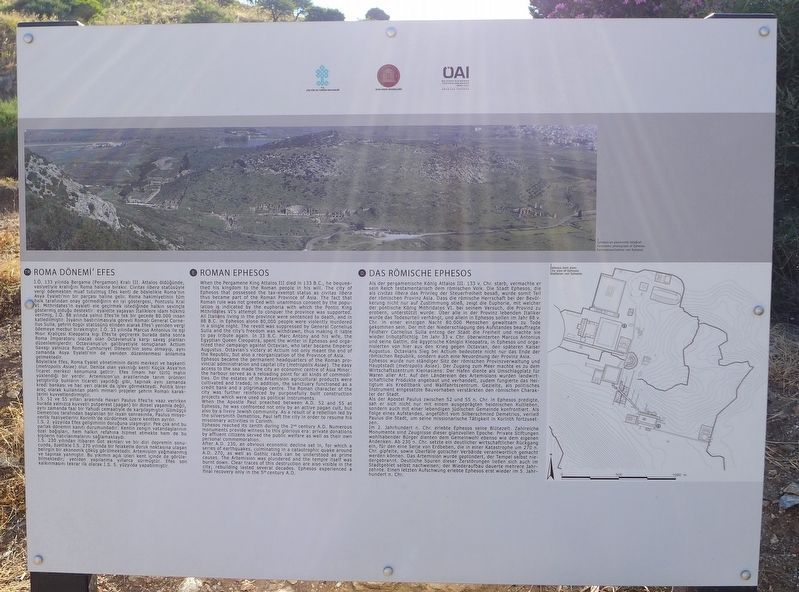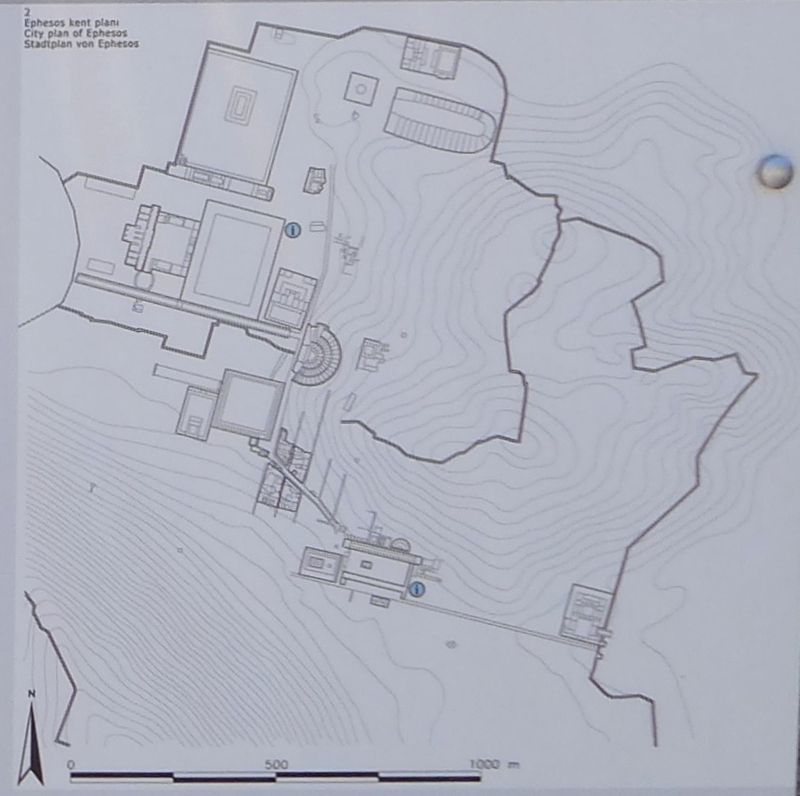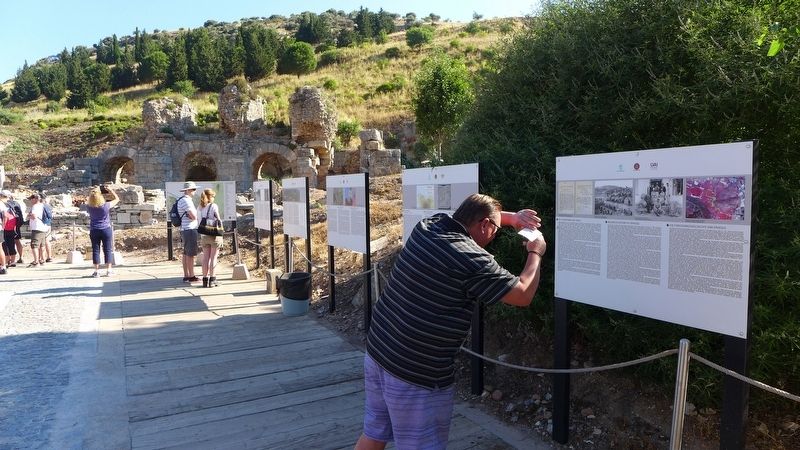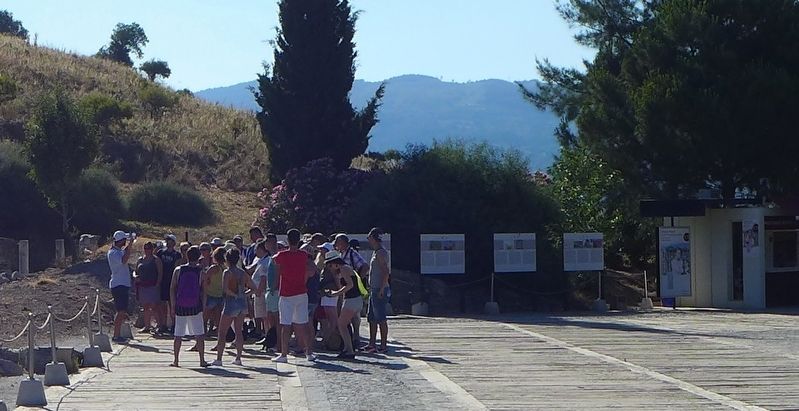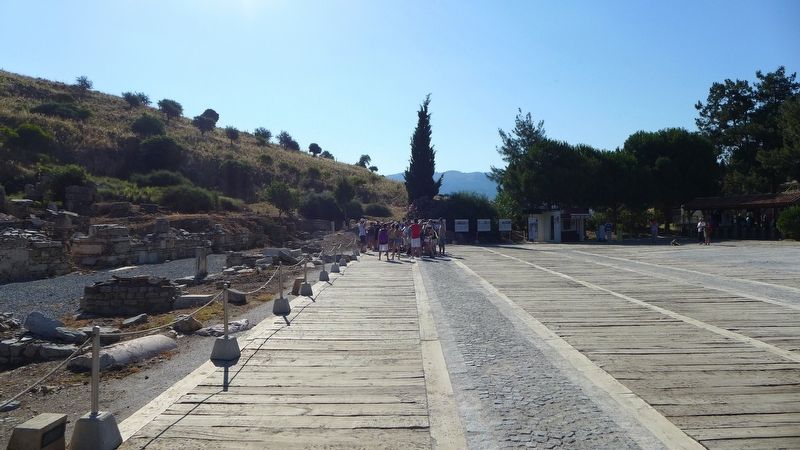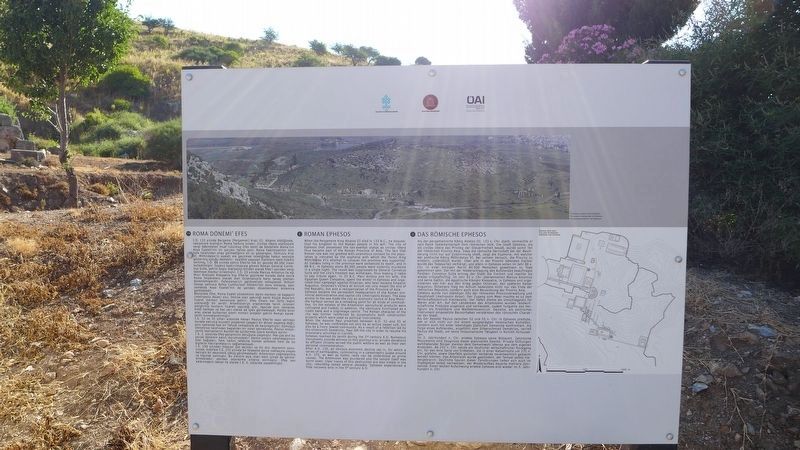Near Acarlar in Selçuk, İzmir, Turkey — West Asia or Southeast Europe
Roman Ephesos
English Text:
When the Pergamene King Attalos III died in 133 B.C., he bequeathed his kingdom to the Roman people in his will. The city of Ephesos that possessed the tax-exempt status as civitas libera thus became part of the Roman Province of Asia. The fact that Roman rule was not greeted with unanimous consent by the population is indicated by the euphoria with which the Pontic King Mithridates VI's attempt to conquer the province was supported. All Italians living in the province were sentenced to death, and in 88 B.C. in Ephesos alone 80,000 people were violently murdered in a single night. The revolt was suppressed by General Cornelius Sulla and the city's freedom was withdrawn, thus making it liable to pay tribute again. In 33 B. C. Marc Anthony and his wife, the Egyptian Queen Cleopatra, spent the winter in Ephesos and organized their campaign against Octavian, who later became Emperor Augustus. Octavian's victory at Actium not only not only meant the end of the Republic, but also a reorganization of the Province of Asia.
Ephesos became the permanent headquarters of the Roman provincial administration and capital city (metropolis Asiae). The easy access to the sea made the city an economic centre of Asia Minor: the harbour served as a reloading point for all kinds of commodities. On the estates of the Artemision agricultural products were cultivated and traded ; in addition, the sanctuary functioned as a credit bank and a pilgrimage centre. The Roman character of the city was further reinforced by purposefully built construction projects which were used as political instruments.
When the Apostle Paul preached between A.D. 52 and 55 at Ephesos, he was confronted not only by an active pagan cult, but also by a lively Jewish community. As a result of a rebellion led by the silversmith Demetrios, Paul left the city in order to resume his missionary activities in Corinth.
Ephesos reached its zenith during the 2nd century A.D. Numerous monuments provide witness to this glorious era; private donations by affluent citizens served the public welfare as well as their own personal commemoration.
After A.D. 230, an obvious economic decline set in, for which a series of earthquakes, culminating in a catastrophic quake around A.D. 270, as well as Gothic raids can be understood as prime causes. The Artemision was plundered and the temple itself was burnt down. Clear traces of this destruction are also visible in the city; rebuilding lasted several decades. Ephesos experienced a final recovery only in the 5th century A.D.
Erected by Republic of Turkey Ministry of Culture and Tourism, and the Österreichisches
Archaeology Institute.
Topics. This historical marker is listed in these topic lists: Industry & Commerce • Settlements & Settlers.
Location. 37° 56.165′ N, 27° 20.742′ E. Marker is near Acarlar, İzmir, in Selçuk. Marker can be reached from Efes Yolu just south of Dr. Sabri Yayla Boulevard (Route D515) when traveling south. The marker is in an archaeological park that is about 3 km (2 miles) southeast of Selçuk. Touch for map. Marker is in this post office area: Acarlar, İzmir 35920, Turkey. Touch for directions.
Other nearby markers. At least 8 other markers are within walking distance of this marker. Byzantine Ephesos (here, next to this marker); The Hellenistic Ephesos (here, next to this marker); The Early Ephesos (here, next to this marker); Research History of Ephesos (here, next to this marker); Ancient Ephesos (here, next to this marker); Baths at the 'State Agora' (within shouting distance of this marker); Processional Way (within shouting distance of this marker); The 'State Agora' (within shouting distance of this marker). Touch for a list and map of all markers in Acarlar.
More about this marker. This marker is one of the many markers that are situated at the archaeological park that displays the ruins of the ancient city of Ephesus. One web site boasts that the ruins that one can see and experience at
Ephesus are, "better than Rome itself," and although some of the artifacts found in this area have been dated back to about 6,000 BC, most of what the visitors to the archaeological park see, date back to the glory years of Greece and Rome.
Credits. This page was last revised on February 2, 2022. It was originally submitted on March 8, 2018, by Dale K. Benington of Toledo, Ohio. This page has been viewed 205 times since then and 11 times this year. Photos: 1, 2, 3, 4, 5, 6, 7. submitted on March 8, 2018, by Dale K. Benington of Toledo, Ohio.
